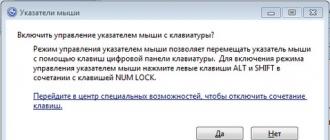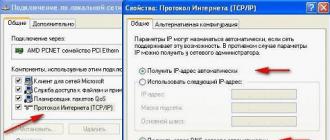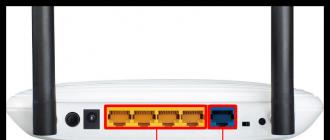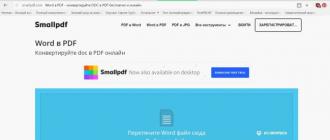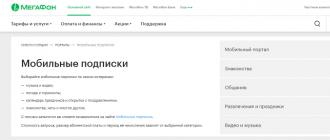Good evening, dear visitors to my blog !!! I haven't written anything new for a long time. I sat and thought, but I remembered an interesting topic that I encountered at the session. The topic of the registry and connecting usb-flash drives, in the classroom, we considered writing code to extract a USB flash drive from the system in safe mode using Free Pascal. The code was properly disassembled and considered within the framework of this topic, I do not see the point, but I will tell you how to clean the traces left by flash drives that you once connected.
How to clean the registry from USB traces?
The cleaning will be done using the standard "Regedit" tool. It starts like this: "Start - Run - regedit"

The main window of the Registry Editor will open. Now you will need to find the following subsections:
- HKEY_LOCAL_MACHINE \\ SYSTEM \\ CurrentControlSet \\ Enum \\ USBSTOR
- HKEY_LOCAL_MACHINE \\ SYSTEM \\ ControlSet001 \\ Enum \\ USBSTOR
- HKEY_LOCAL_MACHINE \\ SYSTEM \\ ControlSet002 \\ Enum \\ USBSTOR
Each of these sections stores data about the connected flash drives. Records with the prefix Disc, you can safely delete. As an example, I give screenshots with the contents of these sections in my registry.

This content is section number 1 - CurrentControlSet

Here you can see the contents of the section - ControlSet001

Well, here, as you probably already guessed, the section entries are ControlSet002
Select and delete records with the Disc prefix.
Why clean registry entries?
If you connect a lot of flash drives to your computer, then your registry starts to clog with this garbage, as a result of which the recognition process starts to slow down with each new flash drive, but do we need it?
Is it possible to facilitate (speed up) the cleaning procedure?
Yes it is possible! To do this, you need to use a program, as an example I can give - Usb Oblivion. The program is easy to find on the Internet, it is free, and weighs very little.

Run the program as administrator, put a check mark on "Perform real cleaning" and press the "Clean" button - it's done.
Sometimes it becomes necessary to disable USB ports on a computer or laptop in order to restrict access for connecting flash drives, hard drives and other USB devices. Disabling USB ports will help prevent any storage devices from being connected that could be used to steal sensitive information or cause a virus to infect your computer and spread malicious software over your local network.
Restricting access to USB ports
Consider 7 wayswith which you can block USB ports:
- Disable USB through BIOS settings
- Change registry settings for USB devices
- Disable USB ports in device manager
- Uninstalling USB Controller Drivers
- Using Microsoft Fix It 50061
- Using additional programs
- Disable USB ports physically
1. Disable USB ports through BIOS settings
- Enter BIOS settings.
- Disable all USB controller related items (eg USB Controller or Legacy USB Support).
- After you have made these changes, you need to save the settings and exit the BIOS. This is usually done with the key F10.
- Restart your computer and make sure the USB ports are disabled.
2. Enabling and Disabling USB Drives Using Registry Editor
If disabling via BIOS does not suit you, you can close access directly in Windows itself using the registry.
The instructions below allow you to close access for various USB drives (for example, flash drives), but other devices such as keyboards, mice, printers, scanners will still work.
- Open the Start menu -\u003e Run, enter the command " regedit”And click OK to open the Registry Editor.
- Proceed to the next section
HKEY_LOCAL_MACHINE \\ SYSTEM \\ CurrentControlSet \\ Services \\ USBSTOR
- In the right part of the window, find the item " Start”And double click on it to edit. Enter value " 4 »To block access to USB drives. Accordingly, if you enter again the value " 3 ”, Access will be re-opened.

Click OK, close Registry Editor and restart your computer.
The above method works only when the USB controller driver is installed. If for security reasons the driver has not been installed, the "Start" setting may be automatically reset to "3" when the user plugs in the USB storage device and Windows installs the driver.
3. Disable USB ports in device manager
- Right-click on the " A computer"And select" Properties "from the context menu. A window will open on the left side of which you need to click on the link " device Manager».
- In the device manager tree, find the item " USB controllers”And open it.
- Disable controllers by right-clicking and selecting Disable from the menu.

This method does not always work. In the example shown in the figure above, disabling the controllers (the first 2 points) did not lead to the desired result. Disabling item 3 (USB Mass Storage) worked, but it only gives you the option to disconnect a single instance of the USB drive.
4. Removing USB controller drivers
Alternatively, to disable the ports, you can simply uninstall the USB controller driver. But the disadvantage of this method is that when the user connects a USB drive, Windows will check for drivers and, if they are absent, will offer to install the driver. This in turn will open up access to the USB device.
5. Prevent users from connecting USB storage devices using an application from Microsoft
Another way to prevent access to USB drives is to use Microsoft Fix It 50061 (http://support.microsoft.com/kb/823732/ru - the link may open near mituta). The essence of this method is that 2 conditions for solving the problem are considered:
- The USB drive has not yet been installed on the computer
- USB device is already connected to the computer
Within the framework of this article, we will not consider this method in detail, especially since you can study it in detail on the Microsoft website using the link given above.
It should also be noted that this method is not suitable for all versions of Windows.
6. Using programs to disable / enable access to USB storage devices
There are many programs for setting the prohibition of access to USB ports. Let's consider one of them - the program USB Drive Disabler.

The program has a simple set of settings that allow you to deny / allow access to certain drives. Also USB Drive Disabler allows you to configure alerts and access levels.
7. Disconnecting USB from the motherboard
While physically disconnecting the USB ports on your motherboard is almost impossible, you can disable the ports on the front or top of your computer case by disconnecting the cable that goes to the motherboard. This method will not completely close access to USB ports, but will reduce the likelihood of using drives by inexperienced users and those who are simply too lazy to connect devices to the back of the system unit.
! Addition
Deny access to removable media through the Group Policy Editor
In modern versions of Windows, it is possible to restrict access to removable storage devices (including USB drives) using the Local Group Policy Editor.
- Run gpedit.mscthrough the Run window (Win + R).
- Continue to the next branch " Computer Configuration -\u003e Administrative Templates -\u003e System -\u003e Access to Removable Storage Devices»
- On the right side of the screen, find the item "Removable Drives: Deny Reading".
- Activate this option (position "Enable").

This section of local group policy allows you to configure read, write and execute access for different classes of removable media.
Good day! If you do not clean all the connectors and ports in a timely manner, you can safely forget about correct and correct operation. Your USB port will start lagging, constantly losing connection, and if you do not clean the connector in a timely manner, then devices connected via USB will no longer be recognized. Do not worry if you do not know how to do it correctly - after all, our portal is intended for uninformed beginners.
Do I need to clean the usb ports of my computer and laptop
Not many people know why cleaning of such fragile, but at the same time important components of a computer, laptop or phone is needed. But think for yourself: how many times a day do you use ports? In the morning, flipping through the tape in VK from your phone, you first put it on charge before a hard work day.
Then, having already returned home, you take a mouse that works with USB and insert a USB flash drive next to it to finish typing an important working document. And this happens every day. Unsurprisingly, the connector (like every other hole) gets clogged very quickly with dust, dirt, and your food debris.
And all this leads to rather unpleasant consequences. Some ports simply stop working, others periodically lose connection with the device. And, if this problem is not fixed, then you can say goodbye to a normal mouse response or stable operation of an external hard drive.

How to clean a usb port (connector)
For a smooth and hassle-free cleaning experience, don't disassemble your PC or phone trying to get to the inside of the dirt. Nothing good will come of this anyway: the inputs are firmly soldered to the motherboard, so you just waste your time.
Our advice is to limit yourself to external cleaning.
To do this, you will need:
- Brush.
- Disinfectant (alcohol or chlorhexidine).
It is not necessary to buy a special brush from a specialty store. Even a hairdresser is suitable here for applying paint (if an old one is lying around in the house) or any other with long bristles. Gently dab some rubbing alcohol on it, let it dry a little so that nothing falls, and start. Try to hit the bristles directly inside, but do not press too hard so as not to break anything.
After that, using a vacuum cleaner or a can of compressed air, carefully blow out the port, getting rid of the remaining dirt.

How to clean a micro usb connector
If the connectors stop working in the phone or laptop, then from this moment you start to have real problems. Since many modern devices are equipped with a micro usb port, cleaning them will not be easy. As a rule, an ordinary tool simply will not fit there.
Take the following:
- A plastic unnecessary card.
- Velcro.
From the useless discount, cut a small strip no wider than the port itself. At the bottom, glue it with some kind of Velcro - these are often included with the charger. Wait for the makeshift brush to dry.
You can search the net for special cleaning accessories - nowadays everything has been invented and sold.
After that, slightly moisten the Velcro with alcohol and start cleaning. Gently push the plastic into the connector and use it to clean the port walls where dirt is most likely to accumulate.

Is it possible to wash usb ports
 Of course, both of the above methods are quite complex, requiring a certain amount of manual dexterity and basic computer literacy skills. Therefore, many people find it much easier to arrange a permanent wash. Some even throw their phones in a soapy solution!
Of course, both of the above methods are quite complex, requiring a certain amount of manual dexterity and basic computer literacy skills. Therefore, many people find it much easier to arrange a permanent wash. Some even throw their phones in a soapy solution!
Of course, you can do this ... If you don't need your device at all and you want to change it. Otherwise, avoid water. It damages the contacts on the microcircuits, which in turn can even lead to a short circuit.
Therefore, our advice is to do everything possible to avoid getting water into your computer or phone.
What is a utility for cleaning usb connectors
Also, people who do not want to bother with such cleaning try to do it programmatically. Indeed, on the Internet you can really find similar software. Moreover, this is no deception. The code is quite working and copes with all the tasks. Another thing is that he carries a completely different goal in himself.
Utilities allow you to clear all data about previously connected USB devices to your computer, and not physically remove dirt from them. And how could this be possible, think for yourself?

Why did the usb ports stop working after cleaning?
Of course, not everything and does not always go as smoothly as we would like. Sometimes, in pursuit of a good goal, we only break everything. And, trying to achieve quick response, we get zero response.
Most likely, during cleaning, you accidentally damaged a wire or short-circuited contacts. It is possible that you somehow caused the contacts to close. In this case, there is only one way out - to contact the service. It's best not to try to fix the problem yourself.

conclusions
In fact, there is nothing difficult about cleaning up ports. You do not need expensive equipment or the skills of disassembling and collecting all the components together, because cleaning can be not only internal, but also external. If you want to do it regularly, just buy a brush from the store.
Video review
Free USBDeview program is designed to display detailed information about all USB devices ( flash card, mobile phone, smartphone, camera, mouse, printer, etc., etc.), ever connected to your computer or laptop, netbook. And it doesn't matter if it is connected at the moment or not.
Good day everyone, or a pleasant evening. As you might have guessed, today we will talk about such a wonderful, I repeat, free USBDeview program. During the life of a computer, laptop, we constantly connect, disconnect various USB devices to it ( smart, mouse, printer, etc ).
It is known (not to everyone) that every device connected to a computer via a USB port will necessarily leave in the system ( all information about connected devices is recorded in ) your trace in the form.
USBDeview features:
- device name / description;
- prohibit and permit the operation of devices;
- date and time when the device was added and the time of the last connection;
- disable and change the device letter;
- serial number;
- open the device parameters in the registry editor;
- product and manufacturer identification numbers;
- assign device autostart;
- can uninstall USB devices that you used before;
- copy its properties to the clipboard and display information about it in the form of an HTML report;
- disconnect those that are connected to your computer at the moment;
- assign execution of commands when connecting and disconnecting a USB device to a computer port;
You can download the program by this link... The archive contains a 32-bit and 64-bit version of the program in Russian. You must select the one you want and tap on the exe file. USBDeview does not require installation (-version). The main window of the program looks like this.
Pay attention to the top panel where the red, green and blue circles are located, namely the green one, this means that the device is currently active.

When you right-click on any device, you can select: disconnect the usb device, delete it, properties, view the contents, etc. Also pay attention to the possibility of control.

Double tap on the selected device will show us the properties of this device.

The program also has such a useful function as "Open in the registry editor", to open this function, select the desired device, tap on it with the right mouse button, then select the appropriate item.

After that, a direct transition is made to the registry editor with this driver.

That's basically all on this, I think that the program will be useful to any PC user. With this program, you can prohibit, allow, or delete selected devices, as well as solve many different problems with drivers.
With respect,
Lists of open files and USB devices, browser history, DNS cache - all this helps to find out what the user was doing. We have compiled step-by-step instructions on how to remove traces of your activities in different versions of Windows, Office and popular browsers. At the end of the article, you will find some scripts that will help you automatically keep your machine clean.
1. Clearing lists of recent places and programs
Let's start cleaning up the list of recent places and programs. The list of recent (in Windows 10 - frequently used) programs is in the main menu, and the list of recent places is in File Explorer.

How to turn off this mess? In Windows 7 - right-click on the "Start" button, select "Properties" and in the window that appears, uncheck both checkboxes in the "Privacy" section.

To clear the list of recent locations and documents, you need to delete the contents of the% appdata% \\ Microsoft \\ Windows \\ Recent directory. To do this, open a command prompt and run two commands:
Cd% appdata% \\ Microsoft \\ Windows \\ Recent echo y | del *. *
It also does not hurt to delete the contents of the% appdata% \\ microsoft \\ windows \\ recent \\ automaticdestinations \\ directory. It contains the latest files that appear in the jump list:
Cd% appdata% \\ microsoft \\ windows \\ recent \\ automaticdestinations \\ echo y | del *. *
To automatically clear recent files on exit, you need to enable the "Clear recently opened documents log on exit" policy, which is located under User Configuration \\ Administrative Templates \\ Start Menu and Taskbar.
Now let's move on to Windows 10. You can turn off the list of recently added and frequently used applications through the "Options" window. Open it and go to the "Personalization" section, the "Start" item. Disconnect whatever is there.

It seems that the problem has been solved, but alas, this is not entirely true. If you enable these parameters again, then all lists with the same composition will appear again. Therefore, you will have to disable this feature through Group Policy. Open gpedit.msc and go to User Configuration \\ Administrative Templates \\ Start Menu and Taskbar. Include the following policies:
- "Clearing the list of recently used programs for new users";
- "Clear the log of recently opened documents on exit";
- "Clear tile notification log on exit";
- Delete the list of programs pinned to the Start menu.

It's easier to clear recent places in Windows 10 than in the "seven". Open Explorer, go to the "View" tab and click the "Options" button. In the window that appears, turn off the options "Show recently used files on the Quick Access Toolbar" and "Show frequently used folders on the Quick Access Toolbar". Don't forget to click the "Clear" button.

As you can see, a simple task like clearing the last objects has a rather difficult solution. Without editing group policies - nowhere.
2. Clearing the list of USB drives
In some secure facilities, only flash drives registered in the journal are allowed to be connected to the computer. Moreover, as usual, the magazine is the most ordinary one - paper. That is, the computer itself does not restrict the connection of unregistered drives in any way. Does not limit, but records! And if, during the check, they find that the user has connected unregistered drives, he will have problems.
We are by no means advising you to try to steal military secrets, but the ability to clear the list of recently connected drives can be useful in other life situations as well. To do this, look at the following registry keys:
HKEY_LOCAL_MACHINE \\ SYSTEM \\ CurrentControlSet \\ Enum \\ USBSTOR \\ HKEY_LOCAL_MACHINE \\ SYSTEM \\ CurrentControlSet \\ Enum \\ USB \\
Here they are - all the drives that you connected to your computer.

It would seem that you just need to take and clean everything. But it was not there! Firstly, the permissions for these registry branches are set in such a way that you will not delete anything even in the "seven", let alone the "ten".
 Oops ...
Oops ... Secondly, it takes a long time to assign rights and permissions manually, especially if there are many drives. Thirdly, admin rights will not help. The screenshot above was created when I was performing the delete operation with admin rights. Fourth, in addition to these two sections, there is a long list of sections to clean up. Moreover, they need not only be deleted, but correctly edited.
If for some reason you need to do everything manually, then search for the keywords MountPoints, MountedDevices DeviceClasses and RemovableMedia. But it's much easier to use a ready-made program that will do everything for you. Some forums recommend USBDeview for this. However, I tested it and I declare that it cleans information from far from all the necessary sections. USBSTOR and USB continue to contain information about the connected media.
I can recommend the program. Launch it, check the "Perform real cleaning" checkbox. You can enable the "Save .reg undo file" parameter or not, but if the goal is not to check the program, but to prepare for the upcoming computer inspection, then it is better to turn it off.

The program not only cleans the registry, but also displays a detailed log of its actions (see below). When it finishes working, there will be no mention of connecting drives to your computer.

3. Clearing cache and browser history
The third point in our tudu is clearing the cache and browser history. There are no difficulties here - each browser allows you to reset the list of recently visited sites.
Continuation is available only to subscribers
Option 1. Subscribe to "Hacker" to read all materials on the site
Subscription will allow you to read ALL paid materials on the site within the specified period. We accept payments by bank cards, electronic money and transfers from the accounts of mobile operators.

